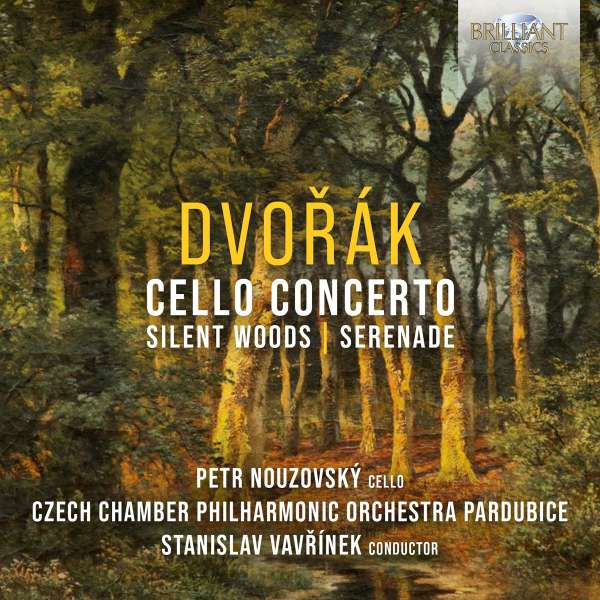Nach der beseelt und mit sonorem Cello gespielten Tondichtung Waldesruhe (Silent Woods) folgt eine ähnlich intensive Aufführung des Cellokonzerts, wobei schon in der Orchestereinleitung des ersten Satzes die schillernden Farben und die ‘Schaut her, wir sind’s’-Rhetorik des Orchesters gerade so auffallen wie das fein sensible Musizieren, wenn es denn angesagt ist, und das alles in prallen böhmischen Farben. Der bald vierzigjährige Petr Nouzovsky tut dasselbe auf seinem Cello: kräftige Gesten und Lyrismus bestimmen sein immer hellwaches und kommunikatives Spiel. Der Enthusiasmus, mit dem er, aber auch die Musiker aus Pardubice spielen, ist infektiös wie Omikron. Konsequenterweise wird das Adagio eher blumig als melancholisch.
Das Finale wird zu einer alerten Wanderung durch den böhmischen Wald, mit beherztem Marschieren an einem Bach vorbei, der über jeden Stein und Felsbrocken hüpft, und man braucht die Ohren nicht zu spitzen, um die musikalische Landschaft erleben, mal kräftiger loslegend, mal kontemplativ verweilend. So frisch und ursprünglich, freizügig auch, hat man dieses Stück nicht oft gehört.
Stanislav Vavrinek setzt das Programm mit Dvoraks Streicherserenade, aus dem Jahre 1875 fort. Die inspirierte Wiedergabe ist mitreißend. Vavrinek nutzt die Qualitäten seiner Streicher voll aus, um das Werk sehr pulsierend zu gestalten und so auch dessen autobiographischen Charakter heraus zu streichen. Dvorak war in jenem Jahr 1875 ein Staatsstipendium zugestanden worden, was ihm alle finanziellen Sorgen nahm. Die Freude, die er verspürte, sich nunmehr ganz dem Komponieren widmen zu können, ist in diesem Opus mit seiner strahlenden und freudig fließenden Musik nicht zu verkennen.
After the soulful tone poem Waldesruhe (Silent Woods), played with sonorous cello, follows a similarly intense performance of the Cello Concerto, where already in the orchestral introduction of the first movement the dazzling colors and the ‘Look, it’s us’ rhetoric of the orchestra are just as striking as the finely sensitive music-making, when it is called for, and all this in bright Bohemian colors. Petr Nouzovsky, now almost forty years old, does the same on his cello: powerful gestures and lyricism determine his always wide awake and communicative playing. The enthusiasm with which he, as well as the musicians from Pardubice, play is as infectious as Omicron. Consistently, the Adagio becomes more flowery than melancholy.
The finale becomes a joyous hike through the Bohemian Forest, with spirited marching past a river skipping over every stone and boulder, and one need not prick up one’s ears to experience the musical landscape, sometimes kicking off more vigorously, sometimes lingering contemplatively. This piece has not often been heard in such a fresh and original, free-spirited way.
Stanislav Vavrinek continues the program with Dvorak’s String Serenade, from 1875. The inspired performance is stirring. Vavrinek makes full use of the qualities of his strings to make the work very pulsating, thus also bringing out its autobiographical character. Dvorak had been granted a state scholarship that year, 1875, which relieved him of all financial worries. The joy he felt at now being able to devote himself entirely to composing cannot be denied in this opus with its radiant and joyfully flowing music.


















